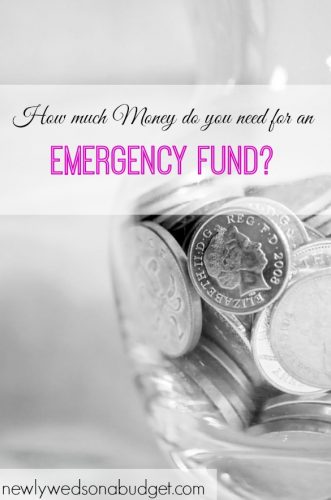 When you are barely scraping by and living on a fixed income or accepting help from the government, creating an emergency fund may be the last thing on your mind. How could you possibly set aside money when you don’t have enough to cover all of your bills?
When you are barely scraping by and living on a fixed income or accepting help from the government, creating an emergency fund may be the last thing on your mind. How could you possibly set aside money when you don’t have enough to cover all of your bills?
The truth is, that creating an emergency fund is the first step in achieving financial independence. When you have money accessible to cover emergency situations, you don’t have to rely on credit cards (which would only make your situation worse) to bail you out. In the case of emergencies when you don’t have any savings, be sure to get help from the right organizations. Micro loans from pop up lenders are not a good idea, getting a loan or assistance from a non-profit or specialty bank program is probably a better option.
If you want to achieve financial independence, start working on your emergency fund today. Here are a few things you should know about your emergency fund:
How much money do you need in an emergency fund?
Ideally, the perfect emergency fund would have enough money to cover 6 months of bills. This fund would help cover you in the event of a job loss and allow you to stay in your home and maintain your current level of living.
For example: a family living in a three bedroom apartment outside of the city would need at least $10,800 to cover the cost of rent for 6 months. That sounds pretty intimidating. To avoid getting overwhelmed set a smaller goal, like a one-month savings fund or $1,000. Make it something you have to work for, but something that’s achievable.
Although an ideal savings is 6 months, aiming for 3-months or even 1-month is better than nothing.
How do you save up an emergency fund when you have little money to spare?
When you are already living on a small income, finding extra cash to stash away can be difficult. Don’t feel like you have to save hundreds of dollars each month. Instead, cut out a small expense or two and set aside that cash. If you can save $50 a month, you’ll have $600 at the end of the year.
Another popular method is called the year-long money challenge. The challenge requires you to save an accumulating amount of money each week. So, week one of the challenge you put $1 in your envelope or jar, week 2 you add $2 all the way up to $52 on week 52. If you follow through with the challenge you’ll have saved $1,378!
Other ideas include starting a change jar. Pay for all of your expenses in cash and any change left over goes into the jar. It may not be a lot at first but it will add up faster than you think. You may also consider adding small jobs on the side, just until you build up a healthy emergency savings account.
When you are struggling to put food on the table every month, finding extra money can be hard. But, the first time you pay for an emergency tire replacement or dental appointment with your own cash, the absence of the anxiety you normally feel about an unexpected bill will be the perfect reward.

5 comments
[…] How Much Money Do You Need for an Emergency Fund? […]
thanks for this post , 1k $ is a good figure to get started i think
Thank you for this great article! I just feel the need to share this. I’m the type of person who overspends a lot even to the point that credit card is my only choice. Unexpectedly, I got laid off. So I was really worried about my credits and source of funds to sustain my daily expenses and bills. And that’s the only time I’ve come to realized how important for us to have an emergency fund. Thank you for this great article!
I think $1000 is a good starting point but the more the better as home or car repairs can be very expensive.
I agree! we have a small $1000 emergency fund we just managed to get going last month and we had to use 650$ on our boiler this month! it was nice to have the cash and not feel that meltdown “where can we get the money?”